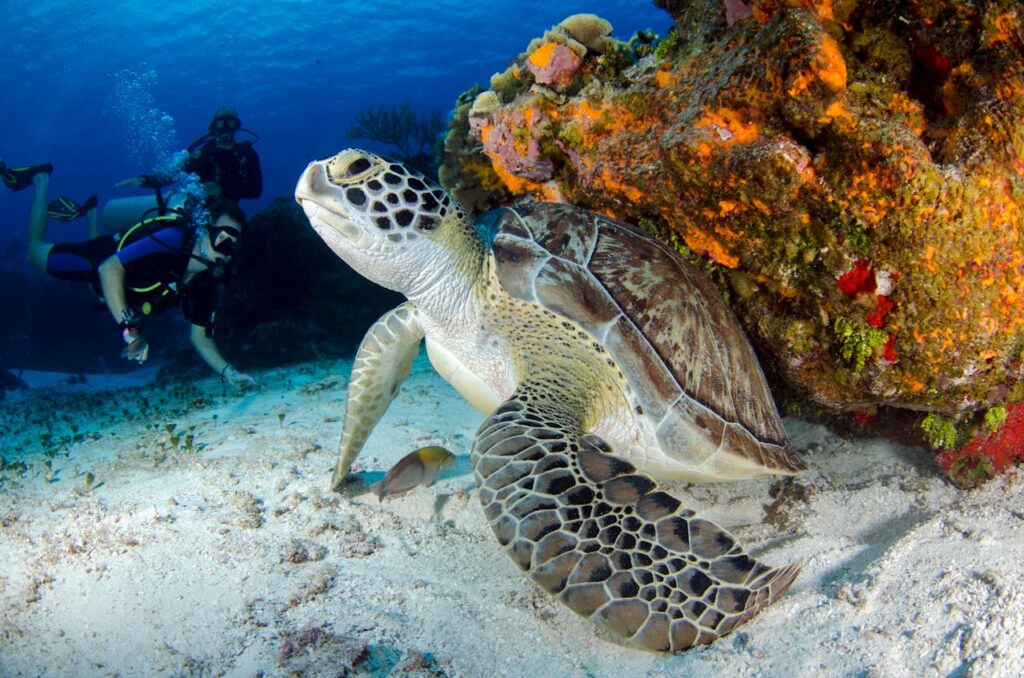Underwater photography is a captivating genre that allows photographers to capture the mesmerizing beauty, diverse marine life, and unique environments found beneath the water’s surface. This comprehensive article delves into the history, techniques, equipment, artistic considerations, practical tips, cultural impact, and trends of underwater photography for audiences in the United States.

Introduction to Underwater Photography
Underwater photography involves capturing images beneath the water’s surface, ranging from shallow coastal reefs to deep-sea exploration. It showcases marine ecosystems, aquatic wildlife, geological formations, and submerged landscapes, offering a glimpse into the underwater world’s breathtaking diversity and natural wonders.

History and Evolution
The history of underwater photography dates back to the early 20th century when pioneers like Louis Boutan and Ernest William Edwards developed waterproof camera housings and diving equipment to photograph marine environments. Advances in camera technology, underwater housings, and artificial lighting have since expanded the possibilities for underwater photographers, enabling them to document underwater habitats with enhanced clarity, color accuracy, and creative expression.

Techniques and Equipment
Underwater Cameras: Use specialized underwater cameras or waterproof housings for DSLRs and mirrorless cameras, designed to withstand water pressure and maintain camera functionality underwater. Select cameras with high-resolution sensors, fast autofocus systems, and manual exposure controls to adapt to changing underwater conditions.
Lenses and Optics: Choose wide-angle lenses (e.g., 16-35mm) for capturing expansive seascapes, underwater landscapes, and marine life habitats. Macro lenses (e.g., 60mm or 100mm) allow close-up photography of small marine organisms, coral formations, and intricate details with shallow depth of field for selective focus.
Underwater Lighting: Use underwater strobes, continuous LED lights, or natural sunlight to illuminate subjects and compensate for light absorption and color loss at various depths. Adjust white balance settings to correct color casts and enhance natural hues of underwater scenes, from vibrant coral reefs to deep-sea abysses.

Artistic Considerations
Composition and Framing: Apply principles of composition, such as rule of thirds, leading lines, symmetry, and negative space, to frame underwater subjects and create visually compelling images. Experiment with perspectives, angles, and depth of field to convey the scale, movement, and textures of marine life and underwater environments.
Color and Contrast: Manage color temperature and contrast underwater to preserve natural color tones, reduce backscatter (light reflections from suspended particles), and enhance visual clarity. Post-processing techniques, such as selective editing and color correction, maintain image fidelity while emphasizing the vibrant hues and intricate details of underwater photography.

Practical Tips for Underwater Photographers
Diving Skills and Safety: Obtain scuba diving certification or collaborate with certified dive professionals to ensure safety, proficiency in underwater navigation, and adherence to diving regulations. Prioritize environmental conservation and responsible diving practices to minimize impact on marine ecosystems and wildlife.
Preparation and Planning: Research dive sites, local marine conditions, seasonal wildlife migrations, and underwater visibility to plan photo expeditions effectively. Use dive logs, tide charts, and weather forecasts to optimize diving schedules and anticipate optimal underwater photography opportunities.
Equipment Maintenance: Regularly maintain and clean underwater cameras, lenses, and housings to prevent saltwater corrosion, remove debris, and ensure waterproof seals remain intact. Carry spare batteries, memory cards, and essential diving equipment for extended underwater photography sessions and unexpected conditions.

Cultural Impact and Contemporary Trends
Conservation Advocacy: Underwater photography raises awareness about marine conservation, environmental threats, and endangered species through visual storytelling. Images document coral bleaching, habitat degradation, and marine biodiversity loss, advocating for sustainable practices and ocean conservation initiatives.
Technological Innovations: Emerging technologies, such as underwater drones, 360-degree cameras, and virtual reality (VR) experiences, expand the scope of underwater photography, offering immersive perspectives and interactive storytelling opportunities. Social media platforms, underwater photography competitions, and marine conservation campaigns promote engagement, collaboration, and global awareness of underwater ecosystems.

Conclusion
In conclusion, underwater photography captures the allure, diversity, and fragility of underwater environments, inviting viewers to explore and appreciate the hidden wonders of the sea. By mastering technical skills, embracing artistic vision, and advocating for marine conservation, photographers contribute to a visual legacy that celebrates the natural beauty, ecological importance, and cultural significance of underwater worlds.
From tropical coral reefs and marine sanctuaries to Arctic icebergs and deep-sea trenches, underwater photography transcends boundaries, fostering curiosity, environmental stewardship, and a profound connection to the oceans that sustain life on Earth. As photographers continue to innovate, document, and share their underwater discoveries, the art and impact of underwater photography inspire conservation efforts, scientific exploration, and public appreciation for the wonders of the underwater realm.
